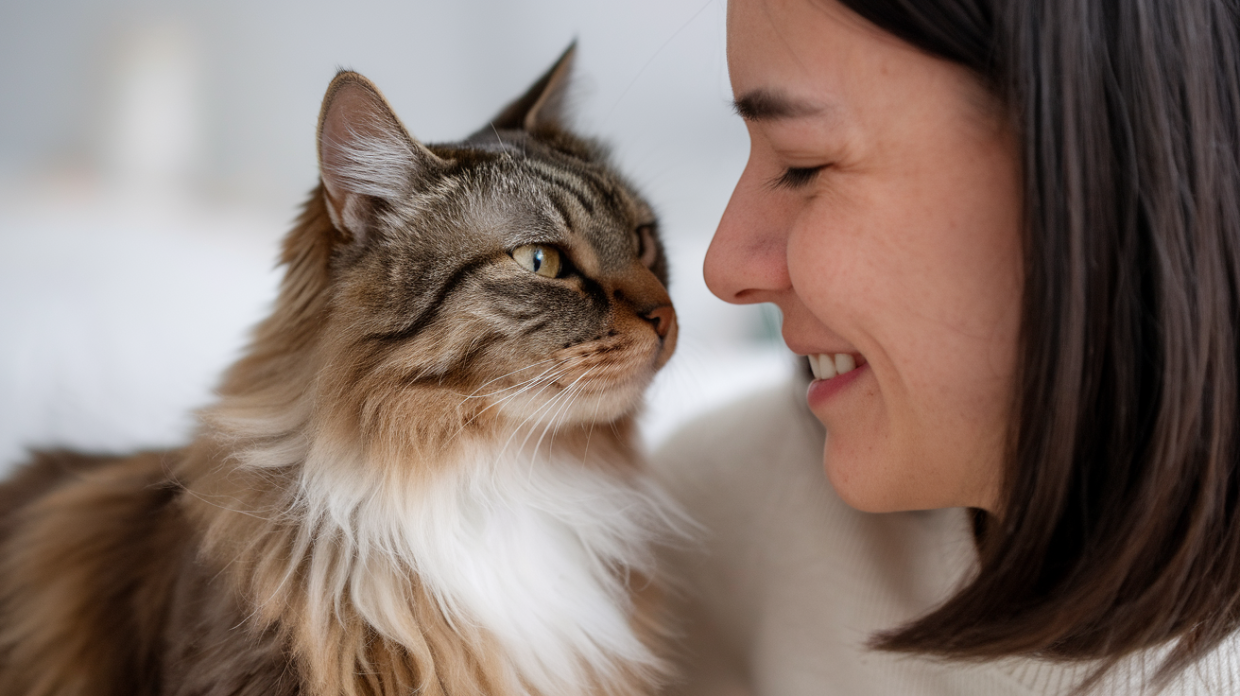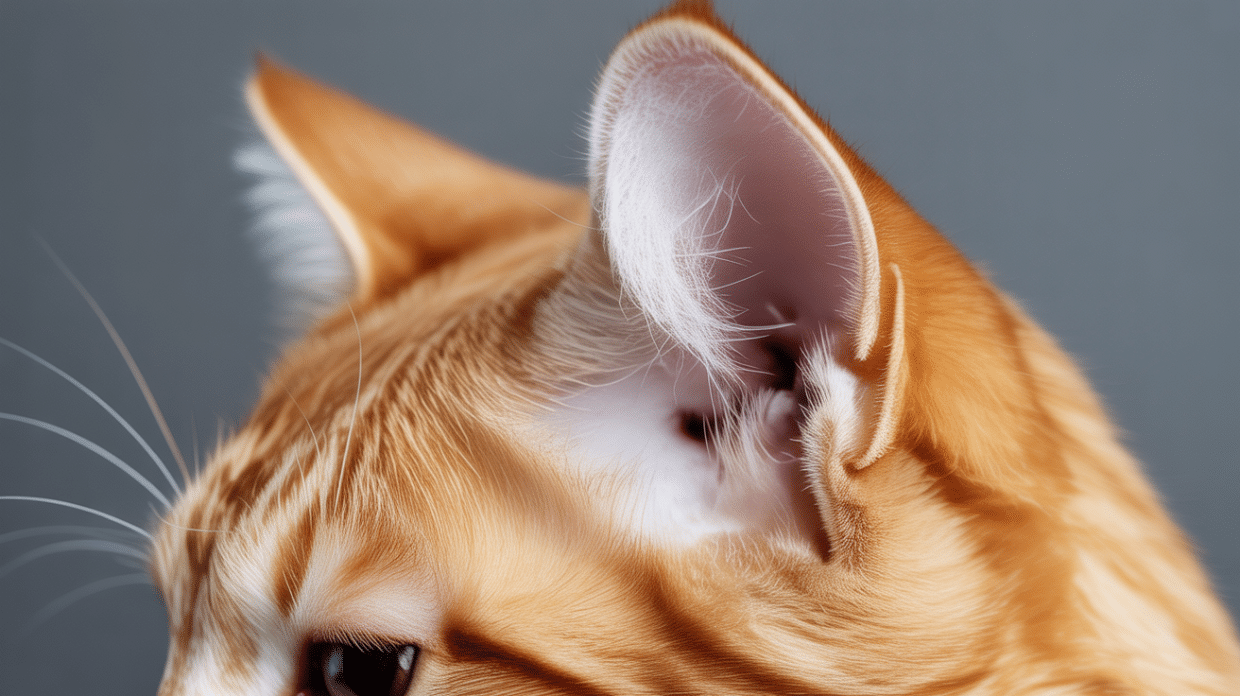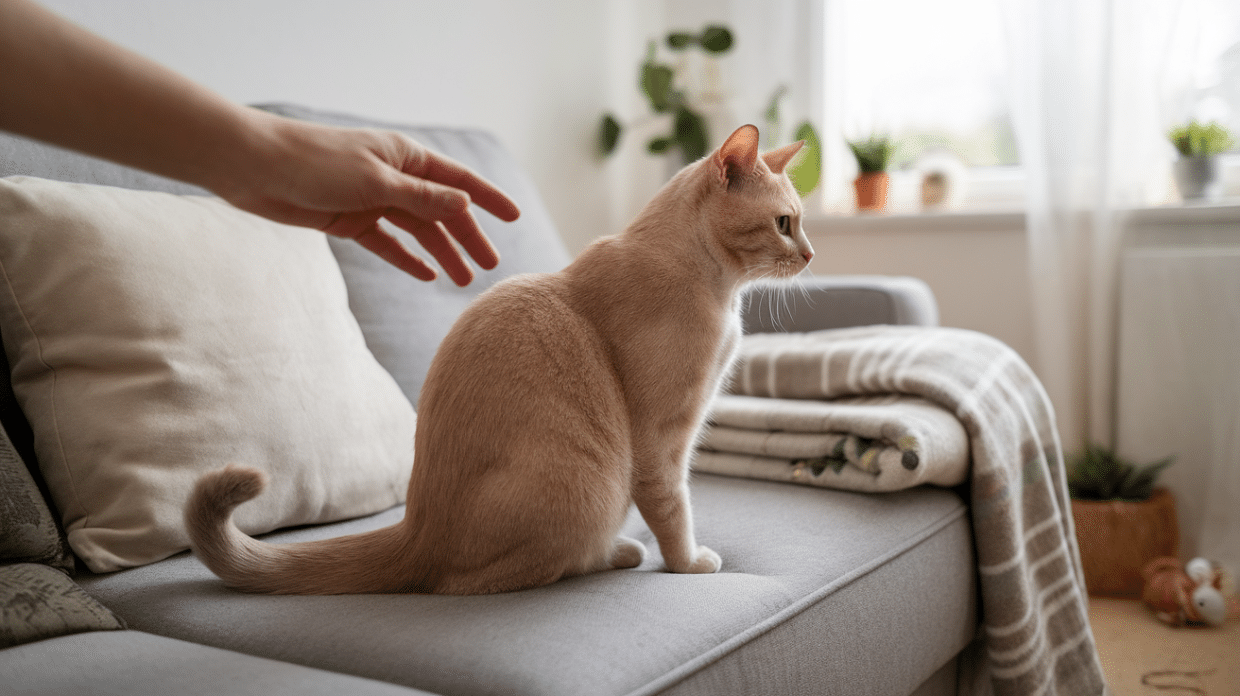Cats speak to us daily, even though they don’t use words. Understanding what your cat is telling you can make both of you happier.
Most cat owners are aware that these intelligent animals have various ways to express their thoughts and feelings. From the way they move their tails to the sounds they make, cats are always talking to us.
Watching your furry friend’s body movements, listening to their meows, and observing their behavior can help you build a better bond.
This guide will help you understand the basics of cat communication and teach you how to speak their language in ways they’ll understand.
Understanding Your Cat’s Body Language
Cats say the most when they don’t make a sound. Their bodies tell stories about how they feel, what they want, and what they might do next. Watching your cat’s movements can help you understand them better than anything else.
Tail Movements
Your cat’s tail shows their feelings clearly. A fast-moving tail means your cat feels upset or excited. When their tail stands straight up, they feel happy and friendly.
A puffed tail signals fear – they’re trying to look bigger. A low or tucked tail means they feel scared or nervous. A gently curved tail shows your cat feels calm and content.
Ear and Eye Signals
Your cat’s ears tell you a lot. Forward-facing ears mean they’re interested and alert. Ears moved back, showing worry. Flat ears against the head indicate that your cat feels scared or angry and may defend itself.
Wide-open eyes mean your cat is alert or excited. Half-closed eyes show they feel relaxed. The slow blink is special – when your cat looks at you and blinks slowly, it’s a sign of trust. Try blinking back slowly to build your bond.
Posture and Physical Cues
An arched back with raised fur means your cat feels threatened. A cat on their back might look relaxed, but could be ready to defend themselves with all four paws.
A cat sitting with a relaxed body feels safe. If they sit in the “loaf” position with paws tucked under, they’re comfortable but watchful. When they stretch out fully near you, especially showing their belly, this shows complete trust and comfort in your presence.
Using Your Voice to Communicate
How you speak to your cat matters as much as what you say. Cats respond to your voice tone rather than your exact words.
They can tell when you’re happy, upset, or giving praise. Using a higher pitch often signals friendliness, while a lower tone might communicate displeasure or seriousness.
The Power of Tone
Use a higher, softer voice to show love or praise your cat. This gentle tone helps your cat feel safe and loved. For setting limits, use a lower, firmer tone without yelling.
A more serious voice lets your cat know certain behaviors aren’t okay. Always keep your voice calm, even if you feel upset. Loud or angry voices can make cats feel scared.
Responding to Meows
Short meows often mean hello. Repeated meows might mean your cat wants attention or food. Long, drawn-out meows could signal stress or important needs.
High-pitched meows usually mean your cat feels happy. Lower-pitched sounds warn that your cat feels upset. Answer your cat when they talk to you. This helps build your bond.
When your cat meows for food, check its bowls. If it meows near a door, it might want to go in or out. By watching what happens around a meow, you can learn what your cat is trying to tell you.
The Slow Blink: A Sign of Trust
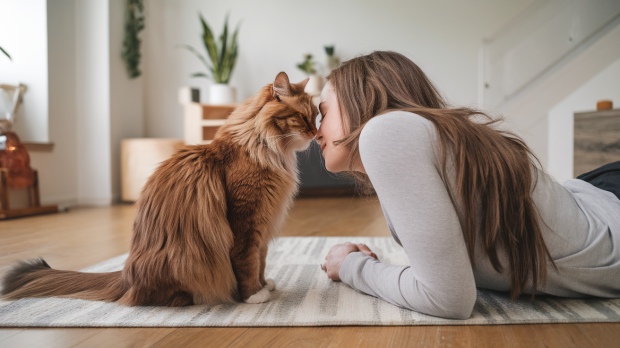
One of the most special ways cats feel comfortable with you is through the slow blink. This simple eye movement is like a cat’s way of kissing you from across the room.
Mimicking the Blink
To “speak” to your cat with a slow blink, make soft eye contact with them from a few feet away. Don’t stare with wide eyes, as cats can find this threatening.
Instead, look at them gently, then close your eyes slowly and keep them closed for a second or two before opening them again. This tells your cat you feel safe with them and don’t see them as a threat.
How Cats Respond
Cats often answer a slow blink with one of their own. Your cat might return the gesture right away or after a few moments.
Some cats might come closer after this eye “conversation.” Others continue what they are doing but with a more relaxed body. This quiet exchange builds a bridge between you and your cat.
It shows you understand part of their language and respect their way of showing trust. Not every cat responds the same way to the slow blink, but most cats understand this gesture as a friendly sign.
Respecting Your Cat’s Space
Learning when to pet your cat and when to give them space matters. Unlike dogs, cats need alone time to feel happy.
Watch for signs they want space, like walking away or flattened ears. Respecting their need for quiet time helps build trust and makes your cat feel more secure with you.
Knowing When to Back Off
Watch for signs that your cat wants space. If your cat’s ears flatten, its tail swishes rapidly, or its skin twitches, it may need a break from being touched.
A cat that turns away from your hand or walks away asks for space.Some cats show they want to be left alone by giving a small hiss or a light tap with their paw.
These are not bad behaviors – your cat is just setting healthy limits. When you see these signs, stop petting and let your cat move away if they wish.
Overcoming Overstimulation
Many cats enjoy being petted, but can quickly become overwhelmed by too much touch. Watch for signs like a twitching tail, ears that move back, or a tense body. These show your cat is reaching their limit.
Keep petting sessions short at first. Focus on areas most cats enjoy, like the cheeks, chin, and base of the tail. Avoid touching the belly or paws unless you know your cat likes it.
If your cat becomes overstimulated and nips or swats, refrain from punishing it. Just stop petting it and give it space.
Positive Reinforcement: Bonding Through Play and Treats
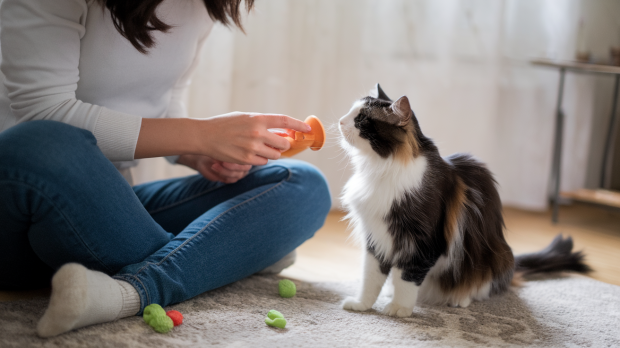
Cats respond best to positive reinforcement. When your cat behaves well, rewarding them with treats, praise, or playtime helps them connect good actions with good outcomes.
This simple approach builds a stronger bond between you and teaches your cat to understand your communication better, making training more effective and enjoyable for both of you.
Using Play to Communicate
Playing with your cat does more than burn energy. It creates a shared language between you. Regular play sessions help your cat view you as a source of enjoyment and positive emotions.
Try to play with your cat for at least 10-15 minutes each day using toys that let you keep your hands at a safe distance.
Watch how your cat moves during play—this tells you what it enjoys. Some cats like to chase, while others prefer to stalk or pounce. By matching your play style to your cat’s preferences, you show that you understand its needs.
Rewards and Praise
Cats respond well to small food rewards when they do something you like. When your cat comes when called or uses its scratching post instead of your couch, a small treat helps it connect its good choice with a happy result.
Keep treats tiny to avoid weight gain. Give the treat after the good behavior so your cat makes the connection.
Your voice is also a powerful tool. When your cat does something you like, use a warm, upbeat voice to show approval. Over time, this praise can work almost as well as food treats.
Unique Communication Methods
While traditional observation of body language and vocalizations is essential, there are also more unconventional approaches to understanding your feline friend.
Telepathic or Spiritual Connection
Some cat owners report feeling a special intuitive connection with their cats, almost as if they can sense each other’s thoughts.
While not scientifically proven, many report meaningful moments of seemingly telepathic understanding during quiet, focused interactions.
Emerging Technologies: Cat Translators and Apps
Recent technological innovations include cat sound translator apps that analyze meows and purrs, attempting to interpret their meaning based on tone, pitch, and context.
Devices like MeowTalk and Cat Language Translator utilize AI to categorize vocalizations into potential meanings, although their accuracy is still in development.
Conclusion
Understanding your cat’s unique language requires attentiveness to its physical cues and vocalizations.
Successful cat communication combines recognizing body language signals—from tail positions to ear movements—with interpreting different vocal sounds.
While technology offers new possibilities, nothing replaces patient observation and consistent interaction. Daily attention to subtle signals and responsive care deepens the relationship you build with your feline companion.
By dedicating time to learning your cat’s communication style, you’ll develop a more meaningful connection and improve your life through a clearer understanding.
Frequently Asked Questions
How do I say “I Love You” in cat language?
Slow blinks, gentle head bumps, and calm, soft-spoken words communicate affection to cats in ways they understand and appreciate.
How can I talk to my cat regularly?
Establish consistent daily interaction times, use their name often, and respond to their vocalizations to build reliable communication patterns.

